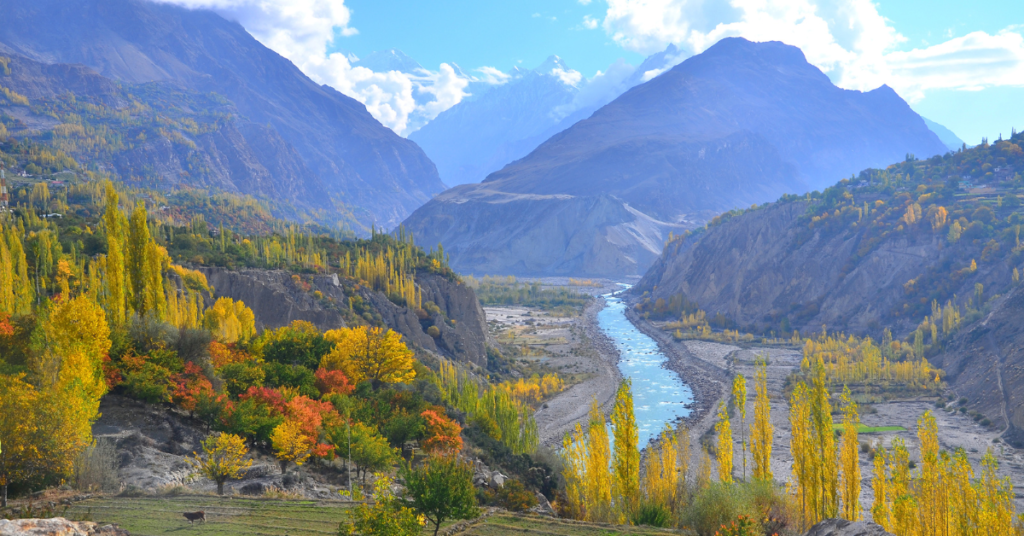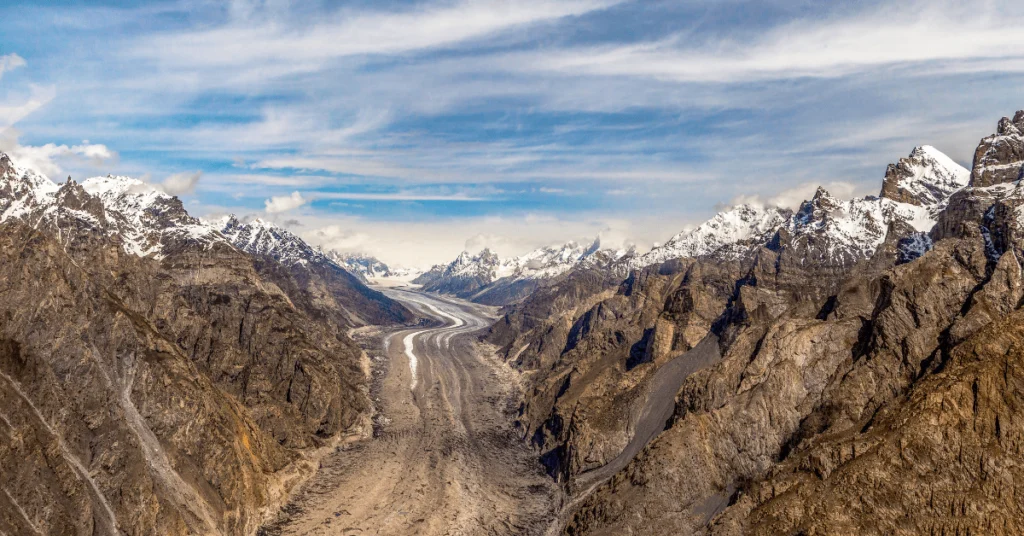If you’re looking for a place that feels like it’s straight out of a dream, Hunza Valley should be at the top of your list. This valley is located in the northern region of Pakistan and offers a fascinating combination of nature, culture, and adventure. If you love road trips, enjoy breathtaking views, or just want to relax in a peaceful environment, Hunza has it all.
Let’s get into what makes this place so special and why everyone who visits falls in love with it.
Where is Hunza Valley and What Makes It Special?
Hunza Valley is tucked away in the Gilgit-Baltistan region of Pakistan. The valley sits along the famous Karakoram Highway, which is known as one of the highest paved roads in the world. The journey to Hunza is exciting, with stunning views of rivers, mountains, and little villages along the way.
Hunza sits at an altitude of 2,500 meters (8,200 feet) above sea level. This high elevation keeps the valley cool throughout the year, making it a perfect place to escape the heat. Everywhere you look, you’ll see snow-capped peaks like Rakaposhi and Ultar Sar, adding to the valley’s magical vibe. If you love photography, trekking, or just soaking in beautiful views, you’ll feel right at home here.
Population of Hunza Valley
Hunza’s beauty isn’t just in its landscapes—its people are equally remarkable. The valley is home to about 65,000 residents, who are known for their hospitality, high literacy rates, and strong sense of community. Visitors often find themselves charmed by the locals, who greet travelers with warm smiles and captivating stories.
What Language Do the People of Hunza Speak?
The linguistic diversity of the region adds another layer to its charm. The main language spoken in Hunza is Burushaski, an ancient language with no known relation to other tongues. You’ll also hear Wakhi and Shina in various parts of the valley. But don’t worry—many locals also speak Urdu and English fluently, thanks to the emphasis on education and tourism.
What Religion Do the People of Hunza Follow?
Most of Hunza’s residents follow Ismaili Islam, a branch of Shia Islam, under the spiritual guidance of the Aga Khan. This community places a strong emphasis on education, equality, and development, which is why the region has made significant progress in literacy and public services over the years.
Top Attractions in Hunza Valley
There’s no shortage of amazing places to explore in Hunza Valley. Whether you want to admire nature, dive into history, or just enjoy some downtime, there’s something for everything.
Attabad Lake: A Scenic Beauty Born from Disaster
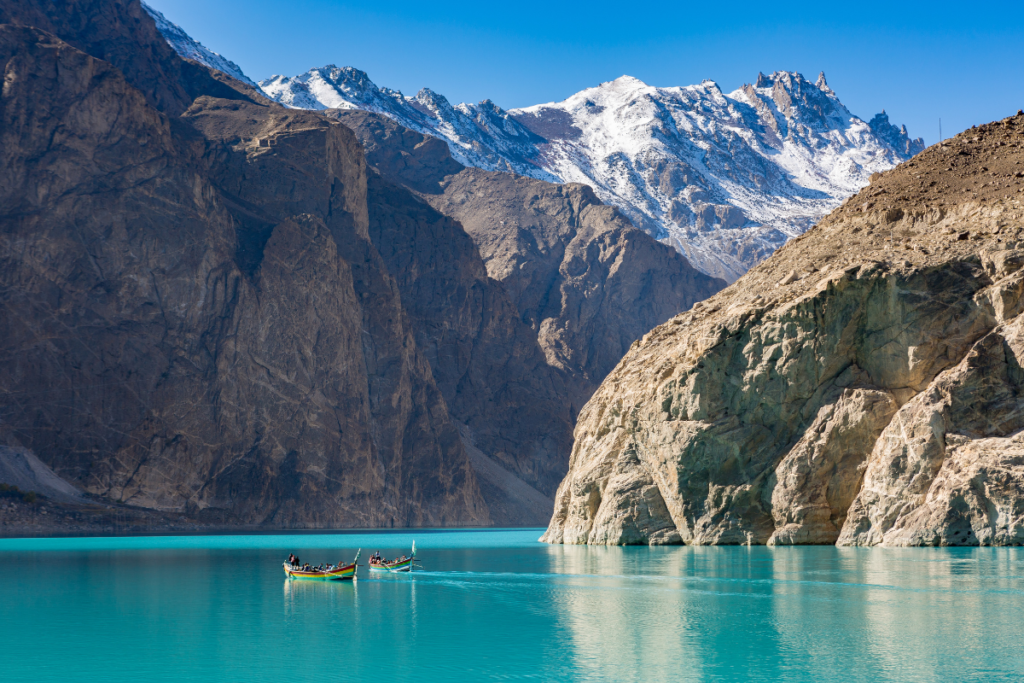
Attabad Lake is one of the most famous attractions in Hunza. It didn’t always exist, though. In 2010, a huge landslide blocked the flow of the Hunza River and created this lake. While the landslide was a tragedy, the lake that formed has become one of the most beautiful places in the region.
The lake’s bright turquoise waters are surrounded by rocky mountains, making it look like a scene from a postcard. Today, Attabad Lake is a popular spot for boating, kayaking, and jet-skiing.
Passu Cones: The Cathedral Peaks of Hunza
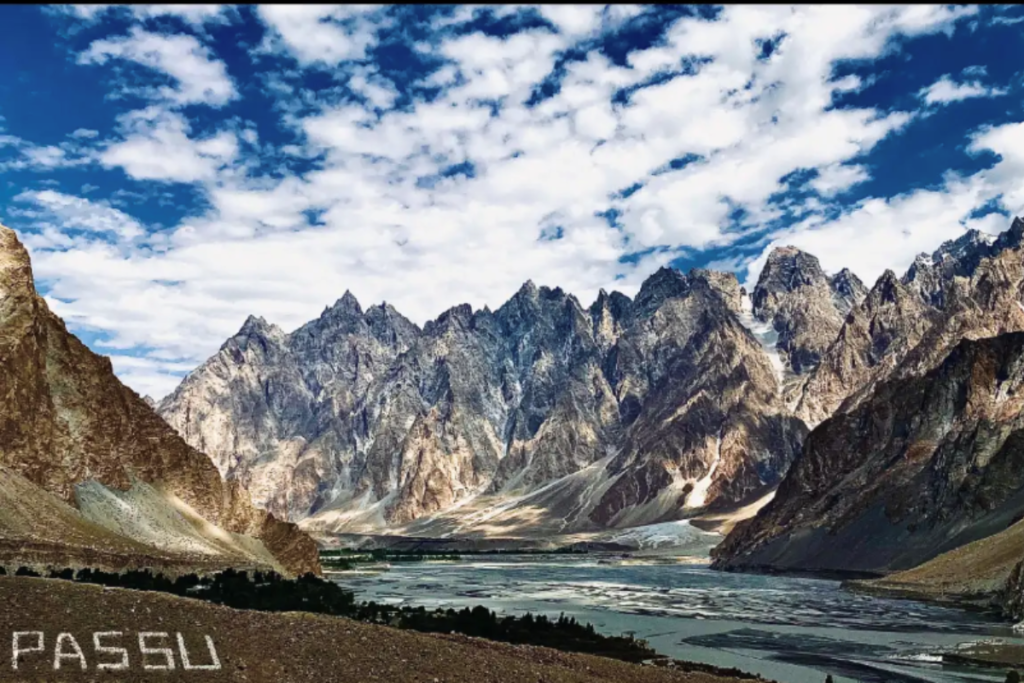
When you drive through the Karakoram Highway, you can’t miss the dramatic Passu Cones. These sharp, pointed peaks are also known as the Cathedral Peaks because of their unique shape. They rise high into the sky, creating a stunning view that photographers and travelers love. If you’re into hiking, you’ll find some great trails in the area that offer even more jaw-dropping scenery.
Baltit and Altit Forts: Guardians of Hunza’s History

Hunza’s history comes to life when you visit the Baltit Fort and Altit Fort. These forts are more than 700 years old and give you a peek into the region’s rich past. Perched on hills, they offer breathtaking views of the valley below.
Baltit Fort has been restored and turned into a museum, where you can learn about the area’s culture and history. Altit Fort is just as fascinating, with its ancient architecture and charming surroundings. Exploring these forts will transport you to a time when Hunza was a small but important kingdom.
Eagle’s Nest: A Perfect Spot for Sunsets
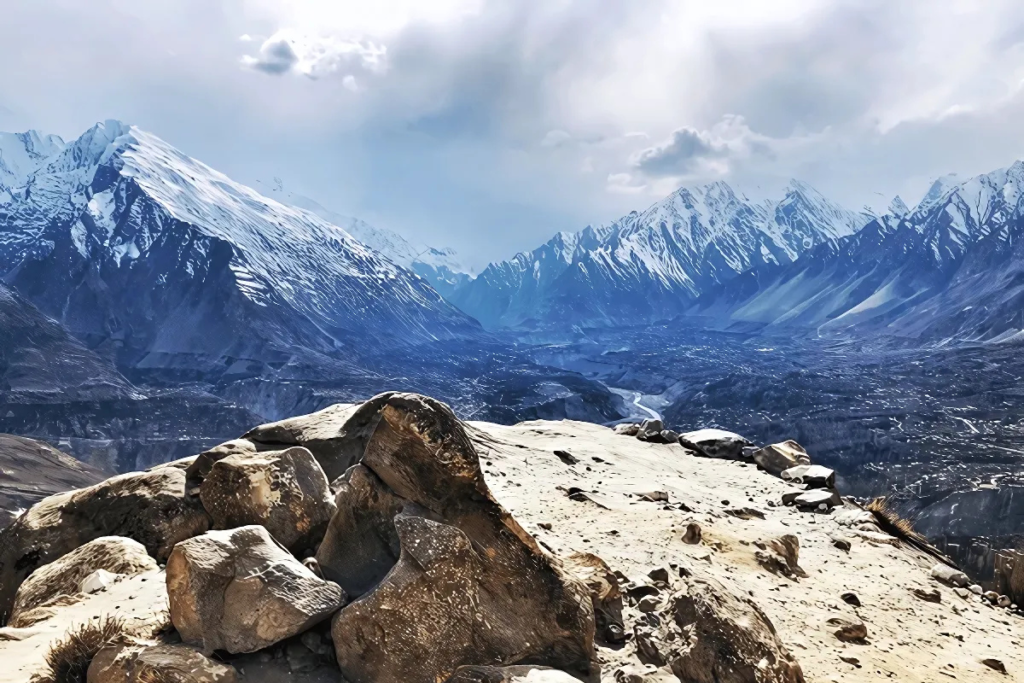
If you love sunsets, Eagle’s Nest is the place to be. This viewpoint offers a 360-degree view of the surrounding mountains and valleys. Watching the sun dip behind the peaks, painting the sky with shades of orange and pink, is an experience you won’t forget. It’s the perfect spot to sit back, relax, and let the beauty of Hunza sink in.
Khunjerab Pass: At the Roof of the World

If you’re up for an adventure, take a trip to the Khunjerab Pass. It sits at a whopping 4,693 meters (15,397 feet), making it the highest international border crossing in the world. This pass connects Pakistan with China and offers some of the most breathtaking views you’ll ever see. On the way, you might even spot some wildlife, like ibex or snow leopards.
When Is the Best Time to Visit Hunza Valley?
Hunza Valley is beautiful all year, but each season offers something unique.
- Spring (April to May): The valley bursts into color with blooming cherry blossoms, making it a photographer’s dream.
- Summer (June to August): The weather is perfect for outdoor activities like hiking and boating.
- Autumn (September to October): The landscape turns into a canvas of golden and red leaves, creating a magical atmosphere.
- Winter (November to March): Snow blankets the valley, turning it into a winter wonderland. It’s quieter during this time, making it ideal for travelers who prefer peace and quiet.
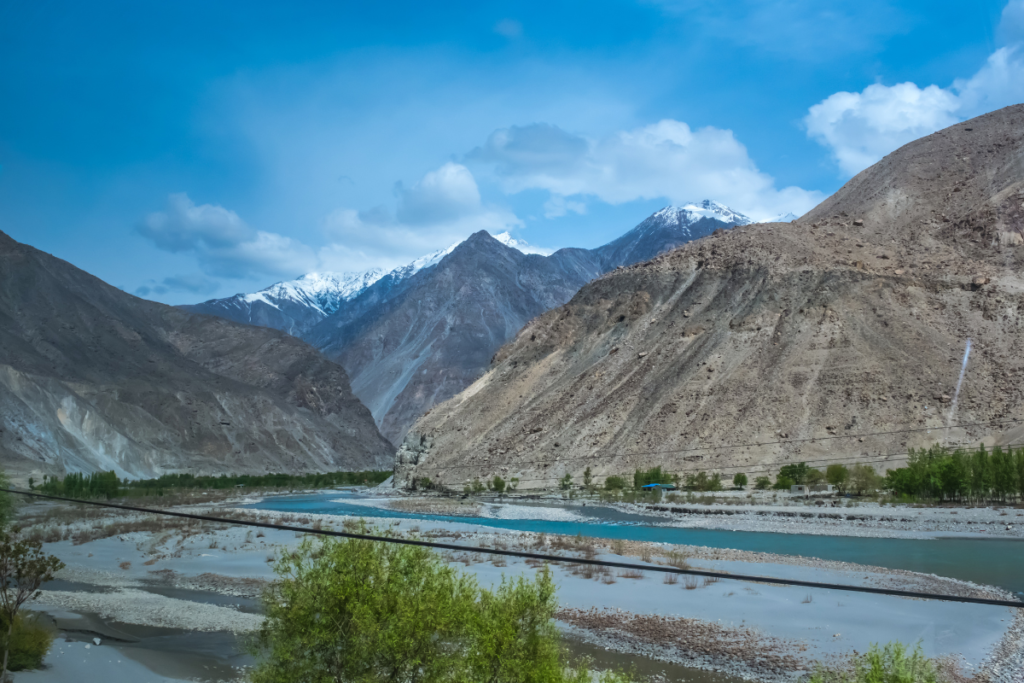
How to Get to Hunza Valley
Getting to Hunza is part of the adventure! There are two main ways to reach this beautiful destination: by air or by road. Both options offer breathtaking scenery along the way, making the journey as exciting as the destination itself.
By Air: The Quick Route via Gilgit
The fastest way to reach Hunza is by taking a domestic flight from Islamabad to Gilgit. The flight takes about an hour and offers jaw-dropping views of the Karakoram and Himalayan ranges. On a clear day, you might even spot Nanga Parbat, one of the highest mountains in the world, right from your airplane window.
Once you land in Gilgit, the journey isn’t over yet! You’ll need to drive for about two more hours to reach Hunza Valley. The drive from Gilgit to Hunza is scenic, with the Gilgit River running alongside the road and views of snow-capped peaks in the distance. As you approach Hunza, you’ll pass through charming villages and get a first glimpse of the majestic Rakaposhi peak, which seems close enough to touch.
By Road: Through Karakoram Highway
For those who love road trips, driving to Hunza along the Karakoram Highway (KKH) is a thrilling experience. The highway, which connects Pakistan with China, is famous for its high-altitude passes, winding roads, and jaw-dropping scenery.
The entire road trip from Islamabad to Hunza takes around 18-20 hours. While it’s a long drive, it’s perfect for travelers who enjoy scenic routes and frequent stops to soak in the views. Along the way, you’ll encounter rivers, bridges, lush valleys, and tiny villages nestled in the mountains.
If you take the KKH route, you’ll come across several breathtaking places along the way:
- Chilas: This small town lies along the banks of the Indus River. It’s a convenient stop to stretch your legs and take in the view of the mighty river flowing through rugged mountains.
- Jaglot: A must-see stop along the KKH is the meeting point of the Karakoram, Himalayas, and Hindu Kush mountain ranges. It’s a fascinating spot where three of the world’s greatest mountain ranges come together.
- Rakaposhi Viewpoint: This viewpoint offers a stunning close-up view of Rakaposhi, one of the tallest peaks in the region. The sight of the snow-covered mountain against the blue sky will leave you speechless.
Road Trip: Via Naran Kaghan Region
Another exciting route to Hunza takes you through the Naran Kaghan region. This route is only open during the summer months (May to October), as snow often blocks the road in winter. But if you’re traveling during the right season, this route offers some of the most spectacular views in northern Pakistan.
- Naran: This town is famous for its lively market and cool climate. It’s a great place to stop for a meal or spend the night if you need a break.
- Lulusar Lake: As you drive along this route, you’ll pass by Lulusar Lake, a serene, mirror-like lake surrounded by green hills. It’s the perfect spot for a quick photo stop.
- Babusar Pass: This high-altitude pass offers breathtaking panoramic views of the surrounding mountains. Standing at 4,173 meters (13,691 feet), it’s one of the most scenic points on the way to Gilgit-Baltistan.
Once you cross Babusar Pass, you’ll merge back onto the Karakoram Highway and continue towards Gilgit and Hunza. The scenery along this stretch includes the Indus River winding through deep gorges, giving you plenty of excuses to stop and enjoy the landscape.
Accommodation and Local Hospitality
Accommodation Options in Hunza Valley
There are plenty of affordable places to stay in Hunza, from cozy guesthouses to family-run lodges. Whether you prefer a room with a mountain view or a simple, comfortable stay, you’ll find a variety of options. The locals are known for their hospitality and go out of their way to make visitors feel at home. Just remember to book early if you’re visiting during peak season!
Food to Try in Hunza Valley
Hunza’s food is simple, healthy, and delicious. One dish you have to try is chapshuro, a meat-filled pastry that’s perfect for cold evenings. Another local favorite is apricot soup, made from the valley’s famous apricots.
The people of Hunza are known for their long lives, and many say it’s because of their healthy diet, which includes lots of fresh fruits, vegetables, and nuts. Make sure to try some of the locally grown apricots and walnuts—they’re both tasty and nutritious!
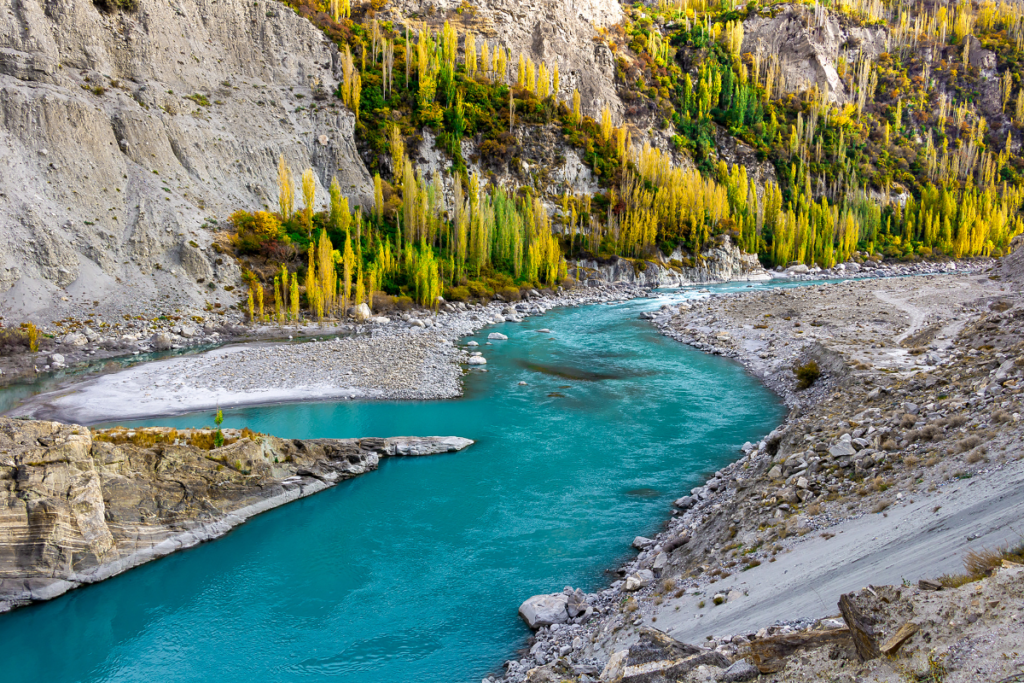
Travel Tips for a Smooth Trip
- Pack Warm Clothes: Even in summer, the evenings can get chilly.
- Carry Cash: ATMs aren’t always reliable, so it’s good to have cash on hand.
- Stay Connected: Internet can be spotty, but most guesthouses offer Wi-Fi.
- Altitude Adjustment: Drink lots of water and take it easy for the first day if you’re not used to high altitudes.
- Check Road Conditions: Landslides are common, so make sure the roads are clear before traveling.
Conclusion
Hunza Valley isn’t just a place to visit—it’s a place to experience. From the turquoise waters of Attabad Lake to the peaceful sunsets at Eagle’s Nest, every moment here feels special. Whether you’re trekking through the mountains, exploring ancient forts, or simply enjoying the local food, Hunza has a way of capturing your heart.
So, if you’re ready for an adventure, pack your bags and head to Hunza Valley. It’s a journey you’ll never forget!

